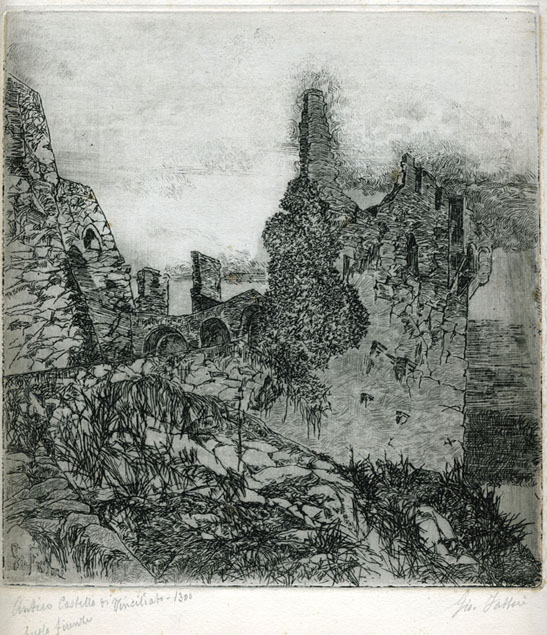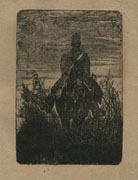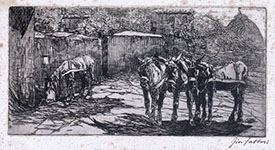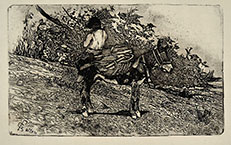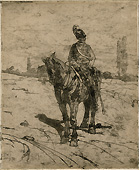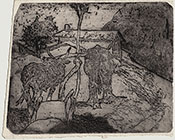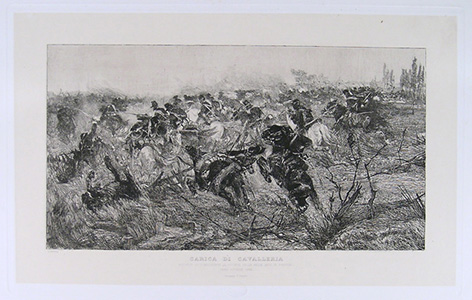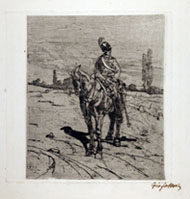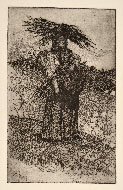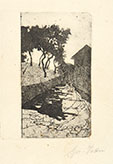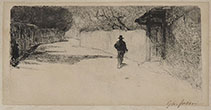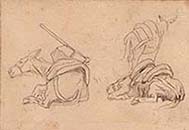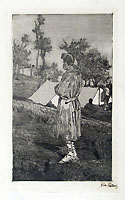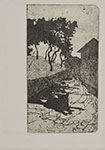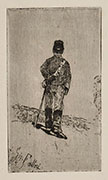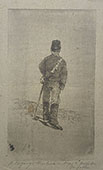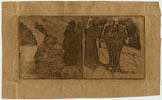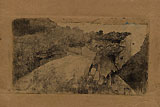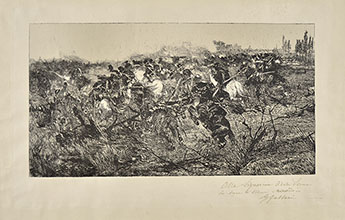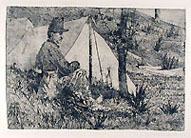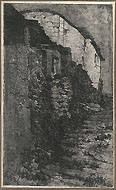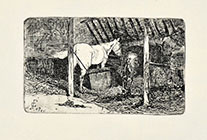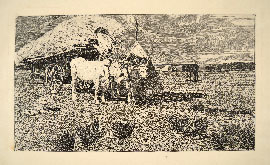(Livorno 1825 - Florence 1908)
ROVINE DEL CASTELLO DI VINCIGLIATA
Zinc etching, Baboni-Malesci CXXXVIII. An extremely fine proof impression, printed with black ink on Chine appliqué, on white wove paper. The print shows an extensive work in the inking: in the foreground a thick surface tone has been left, while on the contrary the sky has not been inked. This creates the maximum contrast between earth and sky. Signed in pencil at the bottom margin Gio. Fattori and titled by the artist in pencil Antico Castello di Vinciliata (sic) - 1300 / presso Firenze. With good margins, minor faults, generally in very good condition. To the platemark 235 x 220 mm, the entire sheet measuring 322 x 300 mm.
Marino Vismara kindly pointed to me the existence of another impression of this etching, with a similar work in the inking, but not signed in pencil. That impression was published in 1925.
Giovanni Fattori, possibly the most important painter of the nineteenth century in Italy, received his first instruction in drawing from a lesser painter of his native town. In 1846 Fattori moved to Florence to attend the Academy. During the 1850s Fattori joined the innovative artists, called Macchiaioli, who met at the Caffè Michelangelo in Florence and were champions of a new technique and style to contrast the conventional academic language. During those years, he still produced works that could be attributed to the historical-romantic school but his interest in studying from life also extended to landscape painting and the military life of the day became the subject of his first experiments in painting using the macchia technique. In 1867, after the death of his first wife, Fattori frequently stayed in the Maremma region which became the ideal backdrop for his works. Fattori began etching in the early 1880s, when he was nearly sixty; quite soon he was able to appreciate the difference of expression he could achieve using this new medium. A real peintre-graveur, he continued with etching his artistic research on light and essential shapes in reality.
